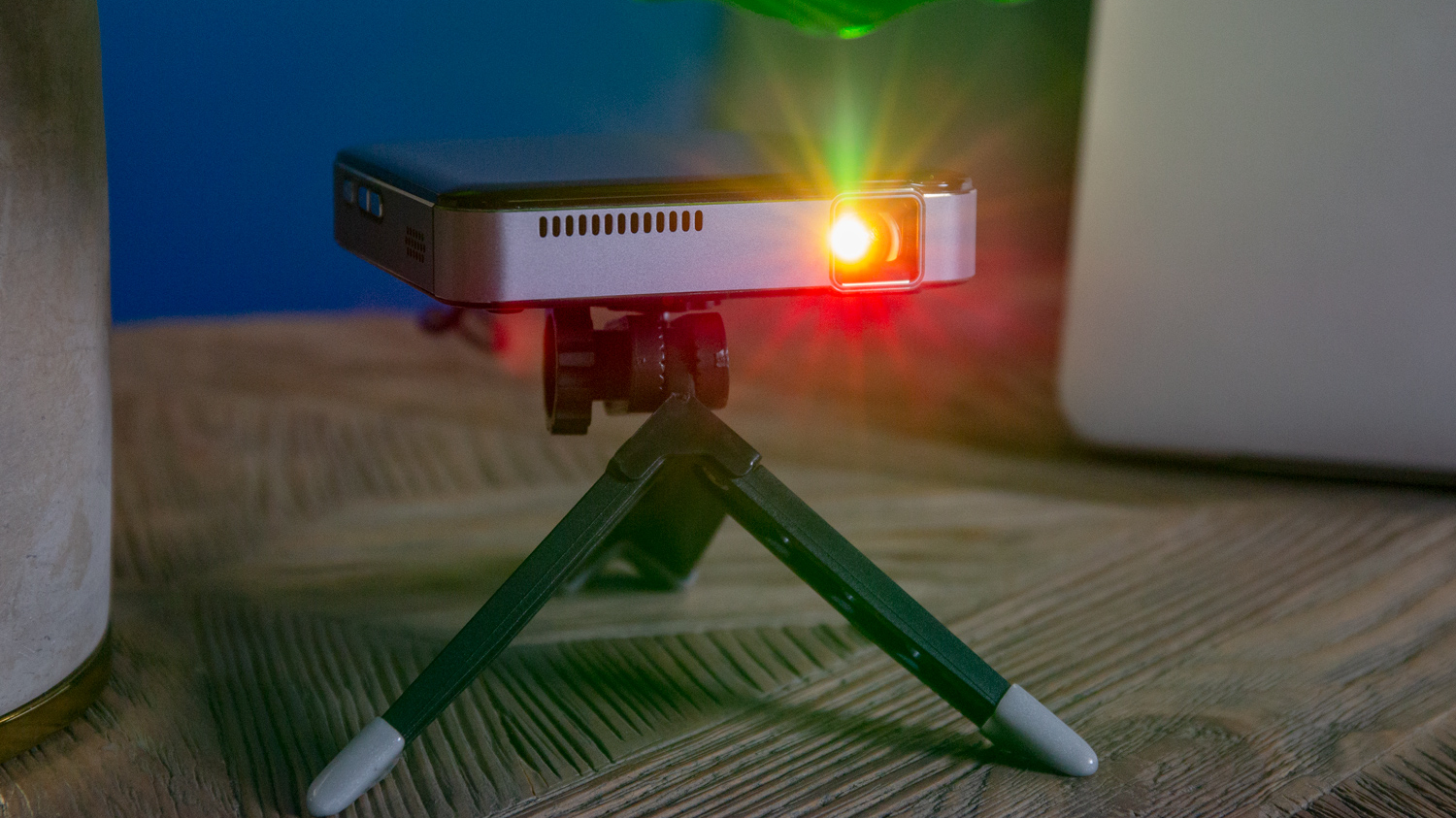The best mini projectors are perfect for home theater nights and outdoor gatherings. They project images and videos onto any screen or wall. They're easy to use and portable and allow you to watch your favorites on a cinema-sized scale. If you want a mini projector to be as effective as possible, consider a few key factors like brightness, resolution, connectivity, and portability.
When choosing a mini projector, consider the brightness, which affects performance in different lighting conditions. A projector with 1000-2000 lumens is generally adequate for dimly lit environments, whereas brighter settings may require a model with 3000 lumens or more. You'll want at least 1080p for professional use, as higher resolutions like 720p (HD) and 1080p (Full HD) offer clearer images.
Ensure the projector has the proper connectivity options: HDMI, USB, or wireless- and prioritize a lightweight design with good battery life if you're moving around. Below, we explain step-by-step how to use your compact projector, whether you're getting cozy with a movie or hosting an outdoor gathering for the big game.
How to use a mini projector: Step-by-step guide
1. Choose the Right Location
When setting up your mini projector, choose a place with not too much ambient light. If you plan to use it outdoors, make sure it's shaded and the sun won't interfere with it. Proper lighting conditions are important for an enjoyable viewing experience.
2. Position the Projector

You can set up the projector on a stable surface by putting it at a distance that corresponds to its throw ratio, which measures the distance between the lens and the screen. Check your user manual for the exact throw ratio and setup instructions for your particular model.
Proper placement not only improves watching but also prevents potential issues. Make sure the area is free of obstructions for a smooth projection.
3. Connect Your Devices
There are several ways to connect devices to a projector. HDMI is the most common connection for laptops, tablets, and streaming devices.
If you want to play media from a USB drive, you can connect it directly to the projector's USB port. You can also connect wirelessly with projectors using Wi-Fi.
4. Power On the Projector

Turn on the projector after connecting it to a power source. Look for the power button, which might be on the projector or on the remote control. Make sure all cables are secured to avoid connectivity problems. Ensure that the projector is set to the right input for your device, whether it's a laptop or DVD player.
After the projector warms up, adjust the focus and image settings as needed for optimal viewing.
5. Adjust the Focus and Keystone
The focus ring can help you get a sharper image from the mini projector. Simply rotate the ring until the image is clear and well-defined. If you see any distortion in the projected image, you can adjust the keystone settings.
If the projection angle causes trapezoidal distortion, this feature lets you fix it so the image looks more rectangular and proportionate.
6. Select the Input Source
Choose an input source like HDMI or USB if you want to display your content. The projector has a control panel or remote control, so ensure everything is set up correctly. Once you select the right input, your content should appear on the screen.
The best ways to use a mini projector
You can use your mini projector for a variety of things once it's set up:
Movie nights: Dim the lights and set up a comfortable viewing area for the best results. Use a portable projector screen or an empty wall for the best results.
Gaming: Connect your gaming console to the projector and enjoy large-screen gaming. For best results, make sure the projector has low input lag.
Outdoor movie nights: Don't forget to have a power source available. Use a portable screen or a white sheet for projection. Start your movie at dusk for better visibility.
How to get the best experience with your mini projector
Here are some tips to make your mini projector experience better:
Project on a screen: While you can project on a wall, a dedicated projector screen gives you better image quality.
Reduce ambient light: Close the curtains or blinds during the day.
Setting up the audio: Most projectors have built-in speakers, but you can connect external speakers via Bluetooth or AUX for better sound.
Keep your lenses and filters clean: Use a soft, dry cloth to clean them.
Settings: You can adjust brightness, contrast, and color settings in the projector's settings menu.
How to use a mini projector: Troubleshooting
There are some common problems and their solutions, even with careful setup:
No Image Displayed: If you don't see an image, make sure all connections are secure and the projector is centered on the right input source. If necessary, restart the projector to fix it.
Poor Image Quality: To improve image quality, you need to adjust your projector's focus and keystone settings and ensure the projector is positioned correctly.
Overheating: To prevent overheating, make sure your projector has adequate ventilation and isn't confined. If your projector turns off unexpectedly, it might be because it's overheating. Proper airflow is also necessary to maintain optimal operating temperatures and ensure your projector works without interruptions.
Sound Issues: If there's no sound, check the volume levels on both the projector and the device it's connected to. Make sure the correct audio output is selected, as incorrect settings could cause audio issues during use.

